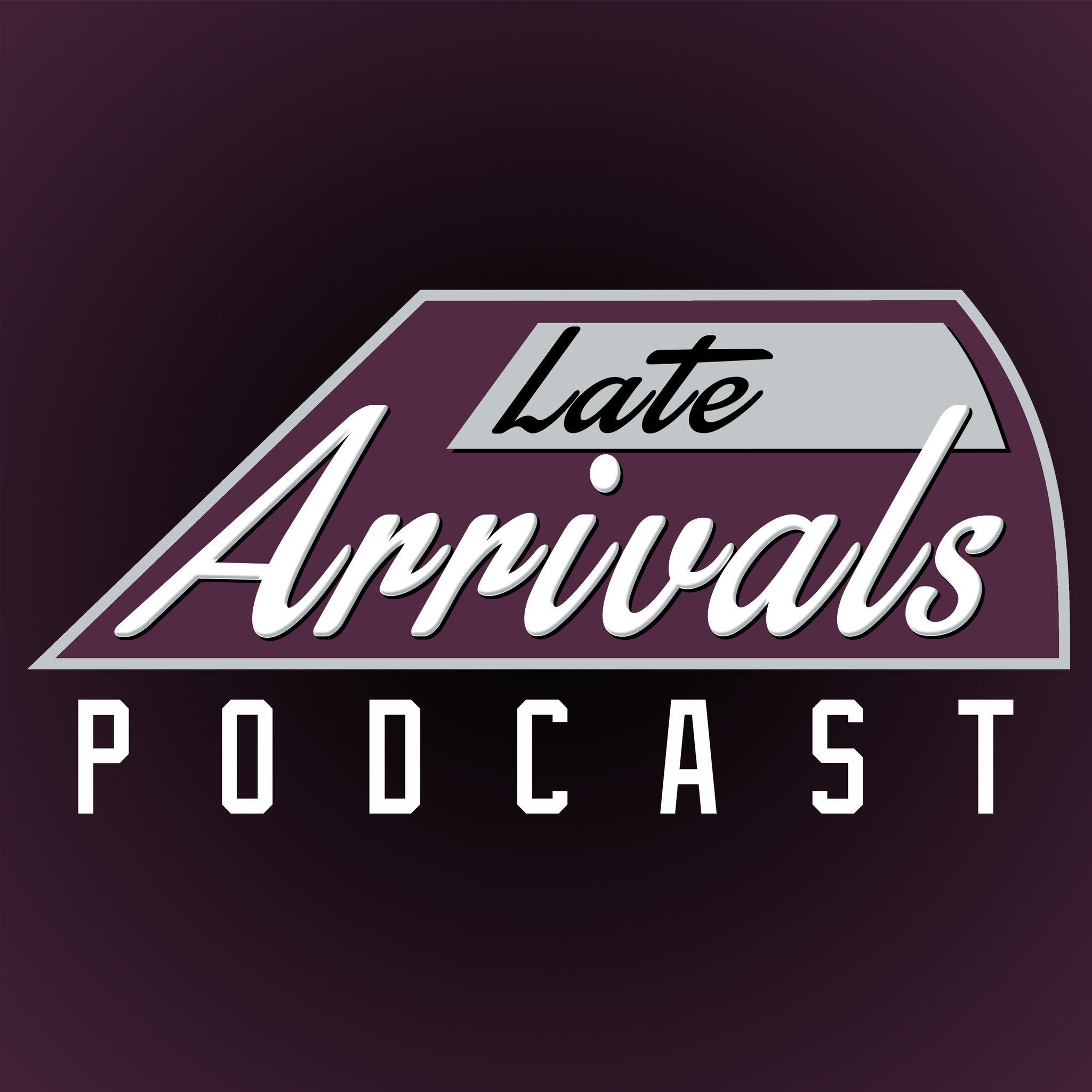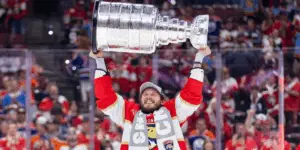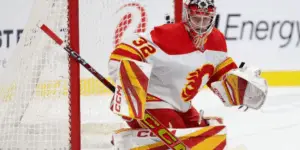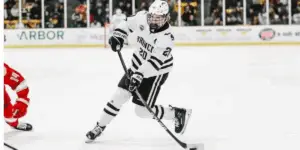
Frustrating loss after frustrating loss, Ducks head coach Dalla Eakins has been the center of attention in Anaheim as there is speculation that his job is in jeopardy.
Last April, the Ducks decided to pick up the club option of Eakins’ contract for the 2022-2023 season after finishing the 2021-2022 season 31-37-14 (76 points). Last year the Ducks showed the NHL world that there is light at the end of the tunnel with their young core taking significant strides, including a 37-goal coming-out party for Troy Terry, a 23G-38A-61P Calder runner-up season from Trevor Zegras, and a 32-point campaign from Jaime Drysdale.
After one of the more busier offseasons for the Ducks that brought in veterans Ryan Strome, John Klingberg, and Frank Vatrano, the Ducks were looking to build off of last year and be more competitive. Also shining some light on the upcoming season was the expectation of top prospect Mason McTavish to play his first full season at the NHL level.
Well, as we sit here 23 games into the season, the Ducks are dead last in the NHL with a 6-15-2 (14 points) record. They are also 30th in the league in power play percentage (15.2%), last in penalty kill percentage (66.3%), and last in shots against per game (37.2).
The young guns for the Ducks have once again been the bright spot on this team. Terry picked up right where he left off, as he has 10G-14A-24P in 23 games and leads the team with 1.52 xG/60, according to moneypuck.com. Zegras has 8G-12A-20P in 23 games and continues to amaze with his creativity and skill. McTavish has had an impressive start to his first full season, going 4G-7A-11P in 23 games and a 0.94 xG/60. Even undrafted free agent signing Pavol Regenda is playing exceptionally well (when in the lineup) with a 1.21 xG/60, which is second-best on the Ducks this year.
Let me be clear, the Ducks were not expected to be good this year. They were expected to be more competitive, but to be this bad is something that cannot go ignored and people need to be held accountable for it. The blame does not fall completely on Eakins, but it is obvious that Eakins is not helping the Ducks this year.
Lineup Decisions
One of the biggest gripes that fans have with Eakins is his lineup decisions. The frustration does not come from winning or losing, but it is the fact that Eakins is not maximizing the potential of this roster.
The lineup decisions have been questionable all year with similar critiques, so I will break down the latest game’s lineup card and highlight the common issues.
Mason McTavish has proved that he is the second-best center on this roster, yet Eakins plays him on the third and fourth line only, and sometimes Eakins puts him on the wing, which is not his natural position. McTavish continues to be one of the Ducks’ best players on a nightly basis when he is playing bottom-six minutes and usually does not have skillful linemates to complement his play-driving abilities.
Another issue with the lineup has been the “duo” of Ryan Strome and Frank Vatrano on the second line. Those two have been on the same line all year long despite not producing very well, especially as of late. Both just seem to not gel together, which is fine, but an adjustment needs to be made to try something new since it clearly has not been working out like everyone thought it would.
Speaking of the second line, is Derek Grant the second-line left wing? The center, who has a 31.8 CF% this year and has not had a season over 40 CF% since 2020, was the best option for the second-line left wing? Grant has been a fourth-line caliber player for the majority of his career, so him playing on the second line makes little to no sense.
Now onto the third line of Carrick-Lundestrom-Silfverberg. That whole line should be switched with the fourth line. Sam Carrick has been up and down from NHL to AHL ever since he debuted in 2014 and is more known for his body than his skill. Isac Lundestrom has not played well enough this season to be getting more minutes than a guy like McTavish since he has six points in 23 games and a 0.42 xG/60 so far this season. Jakob Silfverberg just is not the same player as he was three years ago before having hip surgery. The hockey IQ and the decision making is still here, but the shot and the speed is not.
None of those guys on the third line should be playing ahead of McTavish or even Max Jones, who has had himself a strong start to this season. Jones may only have four points in 23 games, but he uses his 6’3, 216 lb frame to create separation from defenders and forces players off the puck. The use of his big body on the forecheck has gotten him a 1.09 xG/60 this season.
The last critique of the lineup has been the healthy scratches of 22-year-old rookie winger Pavol Regenda. Regenda has only played in 12 games thus far this year and, like it was mentioned before, has the second-highest xG/60 on the Ducks at 1.21. With that kind of production, it would be nice to see Regenda in the lineup every day and let him continue to develop.
To no one’s surprise, the expected goals percentage of each line went: first line 66.9%, second line 23.6%, third line 13.1%, fourth line 60.5%. The fourth line, lead by McTavish and Jones, had a higher xG% than the second and third lines combined.
Special Teams
Another area where Eakins catches a lot of criticism from are the Ducks’ special teams. As noted earlier, the power play and penalty kill are at or near the bottom in the league.
Let’s start with the power play
From a personnel standpoint, there is a significant drop off in talent from PP1 to PP2. PP1 usually is Fowler-Terry-Zegras-Henrique-McTavish and PP2 has some switching up, but lately it has been Shattenkirk-Strome-Silfverberg-Vatrano-Lundestrom. Usually, a PP1 unit will stay out there, if possible, for about 70-80 seconds. This means that if you have multiple power plays in one game, you could see a difference of a couple of minutes in ice time from the PP1 unit to PP2. Until Sunday’s contest against the Seattle Kraken, the difference from the Ducks’ PP1 to PP2 has only been about 30 seconds. Considering how severe the talent drop-off is from each line, it does not make much sense for Eakins to have a quicker hook on their PP1 unit and limit the opportunities to capitalize on the power play.
Now for the execution on the power play, the scheme that it has been running has not been working. The Ducks’ power play has been too stagnant. For the most part, there is a lot of standing in the same area and looking for passes instead of moving around and moving the puck around to create scoring chances. Much like the ice time issue, the puck movement on the power play against the Kraken looked much better, and it showed in the scoresheet as the Ducks scored in 3/4 opportunities on the power play.
Ducks general manager Pat Verbeek spoke on “The Beeker” on Monday, which is a show on the Ducks Stream network where he answered questions for about 15 minutes about everything that is happening with the Ducks. He had some criticisms about the execution of the power play. Verbeek said that you could not dust off the puck on the power play; you need to have more one-touch passes, so the defense does not have as much time to set up, and the puck needs to be constantly moving.
Onto the penalty kill.
The penalty kill is pretty similar to the power play when it comes to execution. The penalty killers just stand in the same general area and focus on blocking the middle of the ice. By doing that, it allows the power play to have the option to move the puck around more freely and create their own chances.
Verbeek also commented on the penalty kill and said they need to apply more pressure on the offense. But one of the biggest things in Verbeek’s eyes was trust. Verbeek said that when you do not trust your teammate to do his job, you start to worry about their job and not yours, and you get beat because you were not focused on your job.
Does Eakins Get Fired?
In that same show, Verbeek says that they plan on evaluating the coaching staff at the end of the year, and he also mentioned that younger guys do not start finding their stride until January usually, so he is showing patience. But that does not mean that Eakins is in the clear. Verbeek also mentioned that he is disappointed in how the team has performed this season, and he expected them to be near .500.
This is Eakins’ final year of his contract, so it is probably safe to say that he will not be returning behind the Ducks bench after this season anyways, so Verbeek could stick with Eakins for the rest of the season, especially if they start to play better in the next few weeks. If things do not improve, however, and the Ducks continue to underachieve, it would not be surprising if Eakins is gone by February.

Episode 133: Mama, Im Quacking Home – Late Arrivals: An Anaheim Ducks Podcast
Discover more from Inside The Rink
Subscribe to get the latest posts sent to your email.



